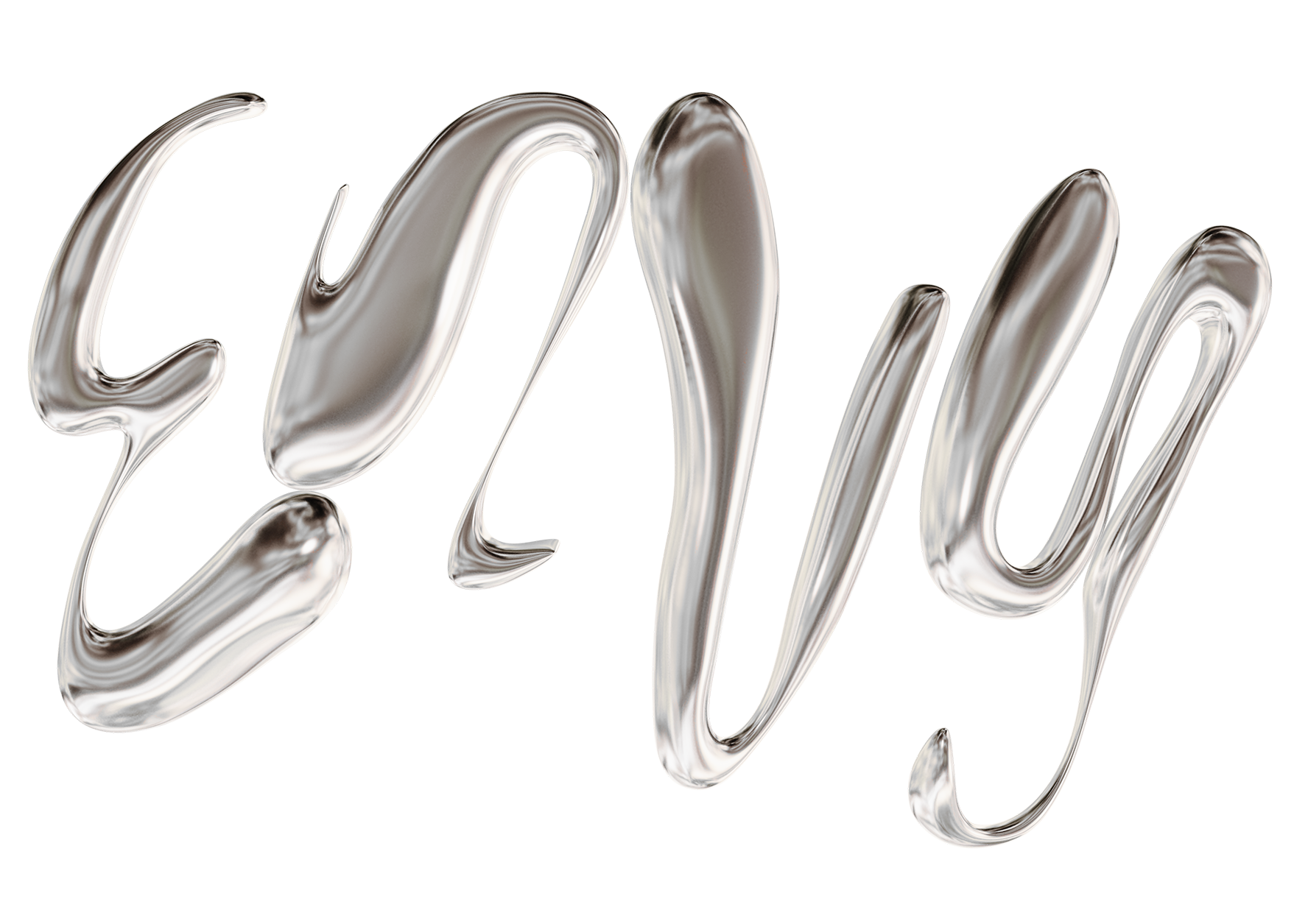ALL THE WAYS WE GET HOME
In Conversation with Ellier English
Interview by Anitah Diggs
11.23
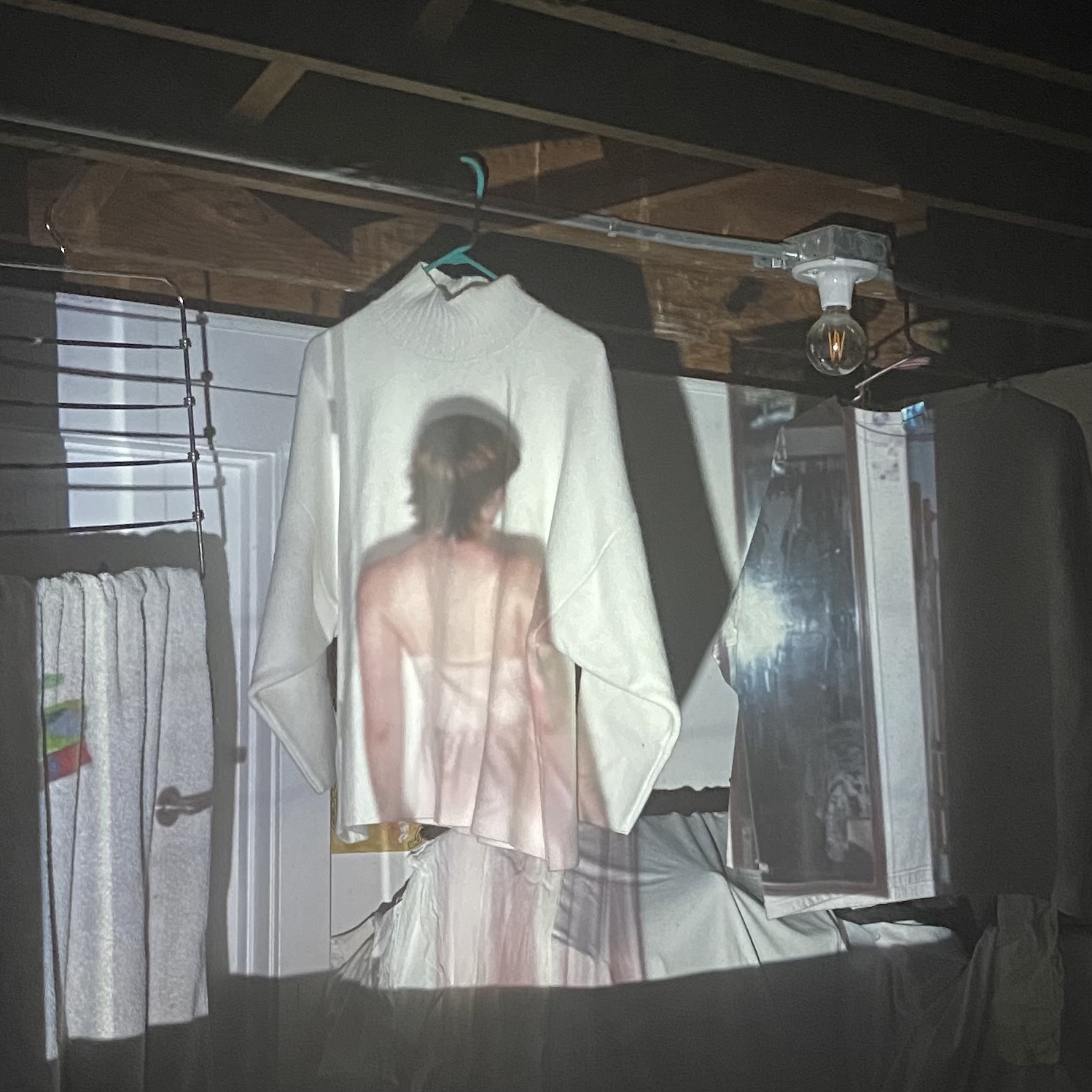
As a self proclaimed nomad and frequent daydreamer, multidisciplinary artist Ellier English is constantly looking for ways to transfer the findings of their travels into an accessible medium of expression. In my conversation with the artist, we revisited their project “All the Ways We Get Home,” a work from earlier this year using projections, archived travel videos and clothing to translate their experiences with nostalgia and self portraiture.
Anitah Diggs: Tell me a little bit more about the project and its conception.
Ellier English: Do you know Tyler Mitchell?
AD: Yea the photographer?
EE: I think like a year and a half or two years ago he had an exhibit called “I Can Make You Feel Good.” And I actually went to see that in New York and he had - it was a little bit different from projections - but he had printed out a bunch of photographs on materials and then strung them up in a hallway to look like when you hang your clothes up to dry. I’ve seen like little bits of projection work before but I’ve never been through an exhibit space like Tyler Mitchell’s that made me feel so good walking through it. So like that, the feeling in itself I kind of had, I was like I want to be able to express art in this way where it’s kinda like captivating like that. And then I don’t know how to print stuff on fabric, so I was like what’s the next best thing? Projections onto sheets, so it started with Tyler Mitchell’s “I Can Make You Feel Good,” project. I just thought it was so beautiful, I felt like I got swallowed up in it. I was like that’s how I want it to feel when people look at my art, that’s a point where I want to get to. I feel like the projections are a good way to do that, because I’m really big on like remembering things, the nostalgia of that. So I feel like the opacity, fuzziness of videos, posting it up on a sheet and projecting it, feels like you’re playing a memory back to the viewer and who’s watching it.
AD: I feel like you travel a lot, I was interested in talking to you about your travels and about how that informs your work.
EE: I am a big solo traveler, I travel by myself all the time and I have since a really young age. I’m a big couch surfer, camp in the car, jump from house to house that kinda stuff. I’ve just met a lot of people through extensive documentation. The reason why I was able to travel so much was because I was lowkey like a Youtube travel vlogger. Like I would do 24 hours in LA and just document every single person I met, every single place I went, everything I did. I think in that experience it led me to get so much b-roll footage of a majority, if not all, of the west coast. Just a tiny bit of middle America, and now I’m branching out on the east coast. I just always keep a camera with me, and if I don’t have a camera then I do everything on my phone. I'm just obsessed with taking videos. I have a thousand videos that I don’t think will ever see the light of day and I won’t ever use but there's so many times, like this project - where I went to Washington four years ago and I was in Tennessee two years ago taking those videos - pulled them up for that video that i took earlier this year.
AD: Obviously you didn’t know that you were going to use those videos and project them on a bag when you were taking them, but why were those videos something that you returned to? Or even, are there landscapes or areas of interest that you’ve seen when you’re traveling where you’re like “wow, I’m really actually gravitating towards these types of landscapes or these types of people.”
EE: One of my favorite things, and this is a totally made up term, it’s something I call a burrow trail. Let’s say you’re out in the desert and you’re hiking and you see that some kind of brush like a bush or a tree creates some type of archway, it kinda looks like you can go into a tunnel. You can kind of see that in the tote bags. I think one of the things that I’m most drawn to is literally hole in the wall imagery, especially in nature. My favorite thing, obviously being from Arizona, I love to be in nature and I love to kind of follow kind of an organic tunnel. I want to go to places that people haven’t been before and I would like to be the person that says “Let me show you what it looks like, let me show you what you’re missing on if you don’t check it, if you’re not looking too closely.” That’s just like a recurring feeling that I have, especially when I interact with people. I very much want to show people things like, I just had this great experience, it means so much to me, it makes me feel this way, it’s inspired me, it just hyped me up- okay now I want you to see the same thing.
AD: Do you have any other plans for your project to put it elsewhere?
EE: I definitely do, I’m sure you saw but There Space had that show for Nyzahir and for me mostly it's just finding a studio space. Not being in college, if I go to a studio gallery, it’s pretty easy to be rejected, and I’ve been rejected like four or five times now. Greater Good has always been a good example, with Valence showing stuff, and There Space, since they’ve gone through the test trial now, Justice is like “Ellier, when's the solo show?” So it’s more encouraging now, but I think prior to that I just didn’t have any desire I guess.
AD: We’re fighting for resources!
*laughing*
AD: I just remember first seeing these photos on Instagram, and I just thought it was really interesting because you explore self portraiture a lot in your work in a lot of different ways, and I just thought it was a super interesting self portrait of yourself in the way that it was presented. Just elaborating on that, in the way that you explore self portraiture and how that’s evolved, and how it was specific to this project.
EE: I think, and this kinda goes with the excessive documentation, my self portraits are very abstract. I almost wish that anyone could put their head on top of my body, in the way that I wish to be seen. Just me personally, I’ve read a lot and I’ve studied a lot about people and emotions and communication and how we can really connect with each other and how we can kinda unlearn like capitalism and how we view each other as objects. Consumerism is so pressed against us all the time. I feel like my self portraits and the stuff that I do, I’m really trying to show myself without just showing my face. I don’t want Ellier’s face, what Ellier looks like to be the sole purpose of my self portraits because, just like how I know everyone else is so complex, there's a deep complexity to me that I would like to share. Maybe that is making people uncomfortable, questioning their own forms of self expression, or maybe that’s inspiring people to express themselves more, but I find that a lot of my artwork is very much me being expressed through inanimate objects. And that's clothing, sculptures, things that you can dress and put on your body, things that you can put on your bedroom wall, things that we can look at and feel and interact with and it’s a part of our daily lives. We’re all feeling the same way the majority of the time, I don’t care what anybody else thinks: we experience it on different levels and stuff but we all feel that same way at some point in the day, we all experience something to some degree, and we all feel some type of way about something that’s happened to us. I think my self expression is me begging for people to understand that layer, or understand that it’s just as much you as it is me, as well as me trying to find ways to express myself that isn’t through words.
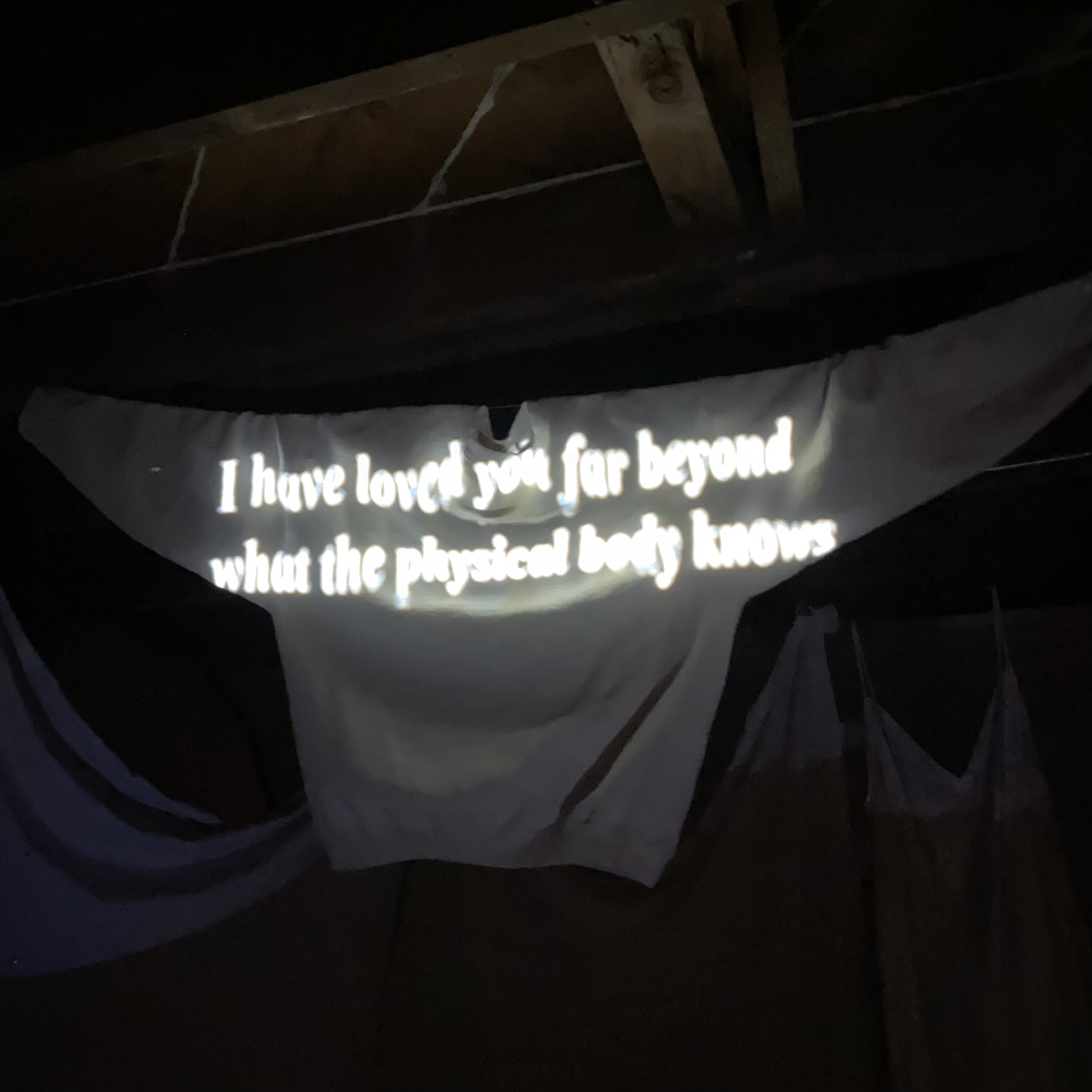
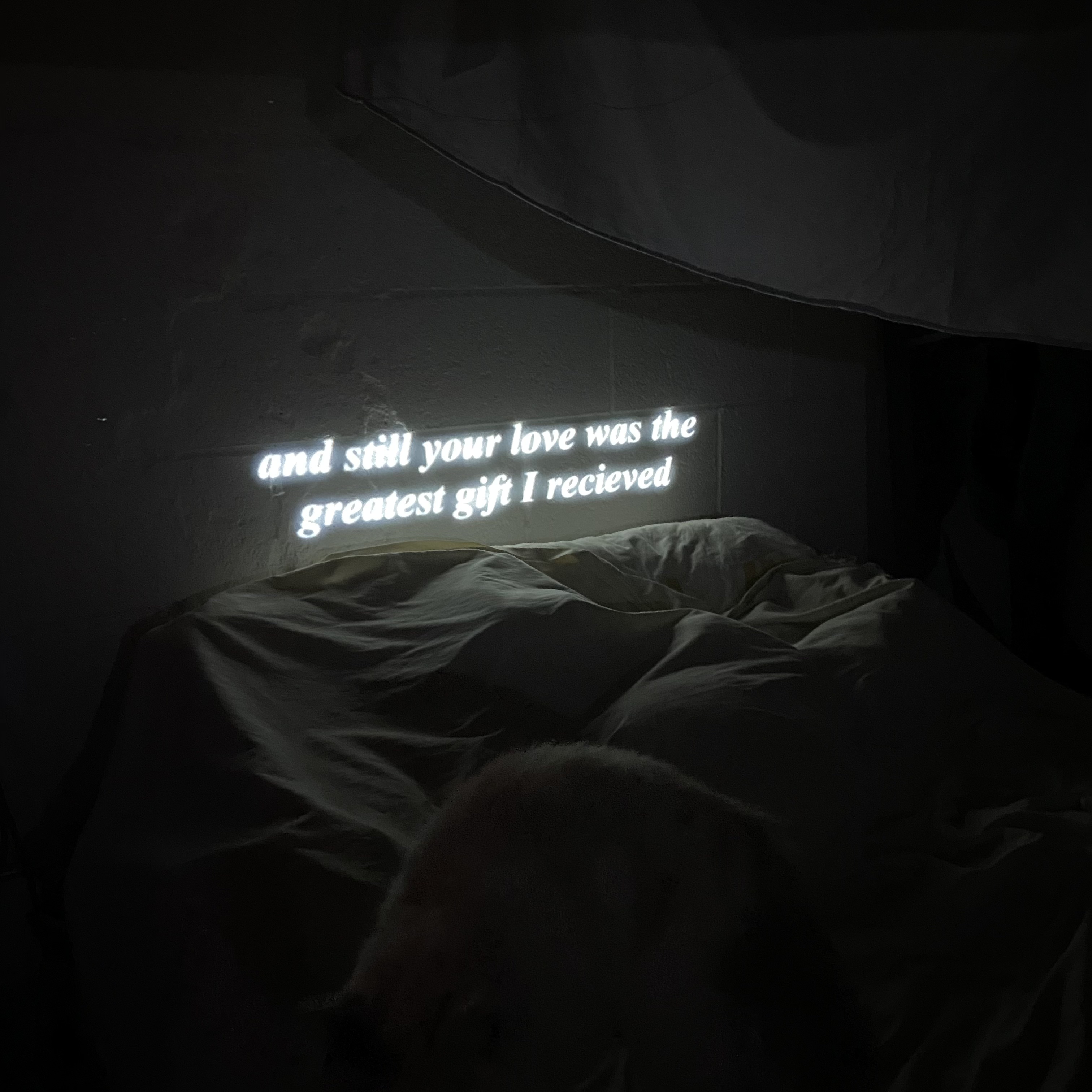
AD: I saw those images and they felt very personal to me. Like this is the way you experience things, in a very nostalgic sense as well, almost fantasy-like.
EE: Like very daydreaming.
AD: Yea, exactly! I definitely got that and see those themes kind of recur in your work. Also in the way that you present your clothing, and even the way that you model your clothes, like a lot of those photos don’t even really have your face in it. Or that one video that you just did of you in the backyard, even those feel personal and your face is never present in it.
EE: I just don’t wanna get lost - and it’s not a self conscious thing - I feel very beautiful and I know I’m very beautiful but I think for me I don’t wanna connect on the level that’s like “Oh Anitah you’re so pretty like I wish I could be just like you, oh you're so beautiful I wish I could be just like you, oh, you get these things because you’re beautiful I wish I could be like you.” Like I don’t wanna appeal to that, and I know I do sometimes, it’s inevitable, but as much as I want to I’d like to stay away from that. Cause again, that backyard video , me laying on my stomach, if my face is not in it then that could be anybody, and it could be replicated by anybody, and it could be rethought about with a different person there, or a different outfit, or a different body. That’s kind of the main idea of it, once you’re not seeing it, it’s just a memory and anything is insertable, and then it’s like part of your world. I think, and this is kind of silly, but sometimes I feel like I am better off being a Pinterest inspo board.
AD: You said think of me as a concept.
*laughing*
AD: No it carries across in your work very well.
EE: I’m like oh my god perceived correctly!
*laughing*
AD: So kinda going off that tangent, the words that you projected onto the clothing, I just wanted to know the inspiration behind those phrases. I feel like a lot of your work is very mixed media based and I don’t see a lot of projects from you that are solely photography, or solely video, it’s always an accumulation of a few different mediums playing with each other at the same time. So in the sense of speaking to the words that you placed on these objects, kinda like the inspiration behind that but also how you find different ways to contribute to mixed media projects.
EE: I just feel like I might not be able to get enough off with just using one medium. Just like I said, pictures vs words, I feel like I'm incredibly lacking when I’m only using one medium. So like with the projecting the words, like the sweater said “I have loved far beyond what the physical body knows.” So I write a lot of poetry obviously, that's one medium that I don't particularly like to share because it is very dramatic and grotesque. But I feel like in having the Instagram handle @ifeelloveandifeelpain, I think emotions are important to talk about, for me especially love and pain is such a difficult concept for me to grasp. Like I grew up in Mesa and then I moved to Gilbert and had a pretty normal life, like pretty privileged it was pretty great, but I also experienced a lot of abuse from my father and my brothers. So I have this very intense internal struggle of what love is, and what constitutes love and what constitutes pain, and why that is. And that’s a very personal journey that I try to put into my art a lot. And that phrase, “ I have loved you far beyond what the physical body knows,” I just didn't know any kind of way I could put that into a different medium and have it translated the same way unless it was in your face. And I had already done this kind of string of stuff in the background, and that’s because I was trying to kind of emulate what Tyler Mitchell had done with the hanging stuff. And I think having it hung up and the way that it looked and the way that it faded out and having it just like blast across the chest and the arms wide open.
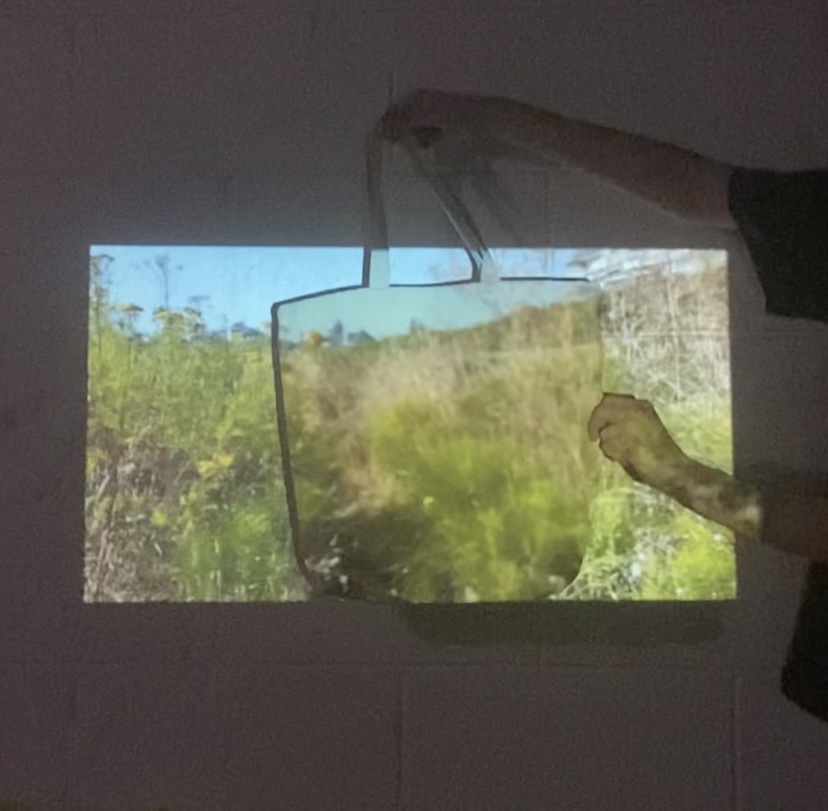

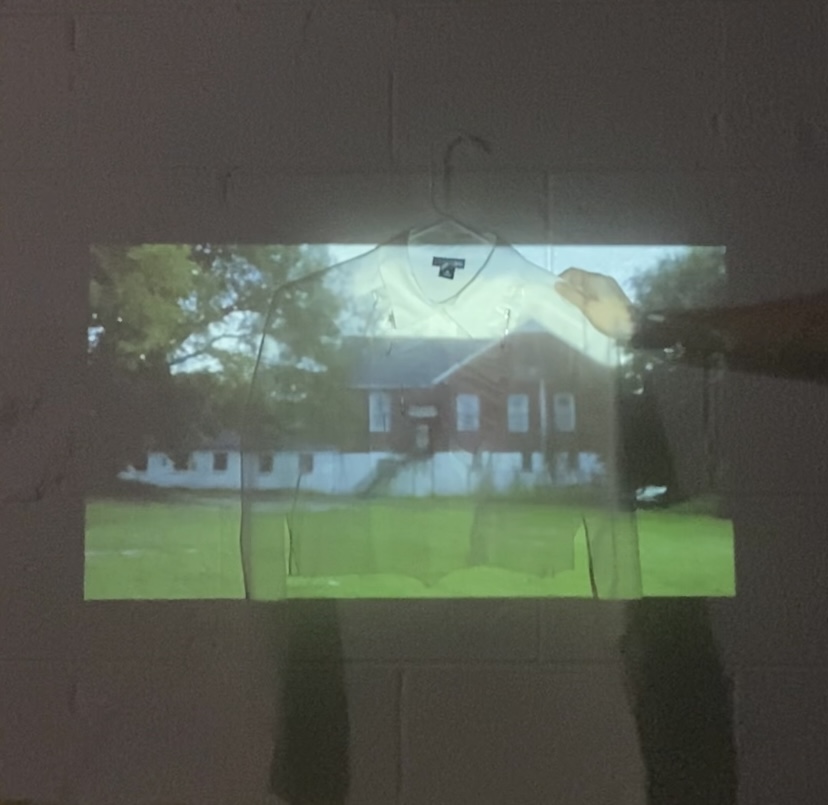
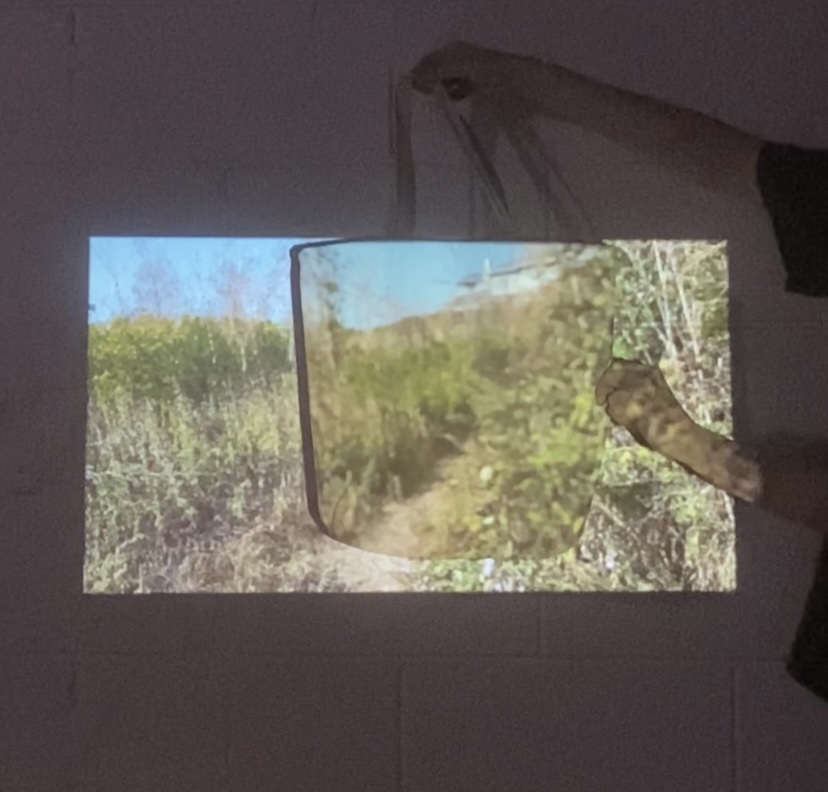
There was one quote that I heard a lot. I was in rehab in New Mexico a few years ago and the quote was “The bravest thing that you can do is close your eyes and flick your nose to the face of the beast.” And essentially what that is is you can only take control of your life when you let go of everything, yunno. The beast being, life. And I just thought that “ I have loved you…,” I guess just in my own journey again with dealing with my emotions, I feel like I have poured out so much love and I just felt like it came altogether with that, with it being so high up and it coming from above and the arms being spread open. It felt like, again, it doesn't matter who’s there, it doesn’t matter who’s wearing the sweatshirt, the sweatshirt is a thing of itself, and anybody can be in it.
AD: Talking more about your graphic design work, you kinda mentioned how alot of your graphic work kinda plays on this recurring theme of nostalgia in all your work, and referencing old video game graphics in your designs in everything. I’m just interested in learning more about that interest, where that comes from and how that overlaps with themes of nostalgia in your work.
EE: My parents got divorced in the last five years or something but before my parents got divorced, both of my parents were super super influenced by fiction. My dad is mainly obsessed with Lord of the Rings, Harry Potter, Game of Thrones, has read all these nerdy ass books his whole life, has played World of Warcraft, Skyrim, just all of those really fantasy games. And I have four brothers, two older and two younger, who are also extremely into gaming. And then my mom is literally just addicted to murder mystery books. And my dad would also work 12 hour shifts and stuff, so he’d work all during the night and then sleep all throughout the day, and then the times that he was up, or just everytime that I saw my dad, like come home from school, wake up, go to sleep, like at the computer playing video games. And he was also a little bit of an artist, I remember he used to have those like how to draw like a comic book artist, and we would just sit for hours and just like trace and stuff. And I love how much my parents love to get lost in things that were fake, yunno like the fantasy. And I think from a young age, having two older and younger brothers and my parents just all being kinda addicted to disassociating really hard from reality. Just being consistently fed being in love with nostalgia from my parents, and then also being in love with disconnecting from reality, I think is what really shaped and influenced my mind and like my creativity and my imagination.
AD: The last thing I wanted to touch on, I just kinda wanted you to elaborate a little bit more on the video for the project “always with and without you.” Did you post this on Instagram?
EE: I did post it but to be honest, it did not get a very positive reaction. It got very curious “what is this, what is this supposed to be,” responses, and so I did get shy and I took it down.
AD: Wow, tell me a little bit about that, like even how it was received on Instagram, even just the project as a whole.
EE: I was on Tumblr, and I found the audio that comes with it and it's by one of my favorite female trans artists, Ethel Cain, and I just fell in love with that song and I love her lyricism. Like growing up hyper religious and then being rejected and then having queerness abused, questioned and objectified, it felt very relatable. And I understand that maybe it's not relatable to everybody but it had really opened up something just inside of me and I was like I just want to emulate something from it. It just stirred up so much emotion within me that I was like I can't just not do anything about it.
In the imagery and stuff you have like hands with blood on them, it's all just paint and makeup and stuff but the hands washing with the fake blood, and I think that was representative for me of just washing anger away, washing away opinions of others. It’s a very strong symbol and I think it's a symbol that I'll keep repeating in a lot of my artistry. I have my little martyr tattoo, I feel like I have died many times for how I have felt about things or the things I have just believed in, and it’s also just bought me a lot of pain having to come to the realization and acceptance that yunno maybe this religious background of me will never accept the queer identity that I am now and the queer lifestyle that i’m living. And sometimes it feels very lonely, just because I do have an incredibly large family and I don't see or speak to any of them because of those differences. And so you’ll see this imagery of me standing outside, without a shirt on and this projection is on my back, and I don't know if you can see it in the video, but at one point there's actually a person on the center of my back who steps out and leaves. So that’s actually me from a different video previously from many months ago that I took and posted on my back. So very figuratively, there's a version of me that I’m leaving behind, even though it does feel very cold, lonely, scary, wet, it feels very much like an abandonment. And then mixing the water on top of that I think it's very undeniable to touch water, to feel water, to hear water and not know that it’s building on that layer. I feel like what made me so excited about it was the video itself is dry, the makeup was all done beforehand it was all planned, and by the end of it with the song it just feels…it almost feels like there's a portion of my sadness trapped in that video, and that’s only where it exists. And then when you have the water rushing over it, again, it kinda takes over what’s actually happening in the video, like it’s just washing everything away, yunno like what is being washed.
And I was really excited about it. I thought it was really cool, I wish I had a little more of a better setup other than a shower head, but I really liked how that was. I don't think that I included enough context or any context, and I think that's maybe why it got misread, but I do know that it did make a lot of people uncomfortable, which for me is a good feeling because I feel like all of those experiences in itself are really uncomfortable for me, like even though you can't appreciate that fact that you're uncomfortable, the fact that you're uncomfortable is enough for me to have made my point.
